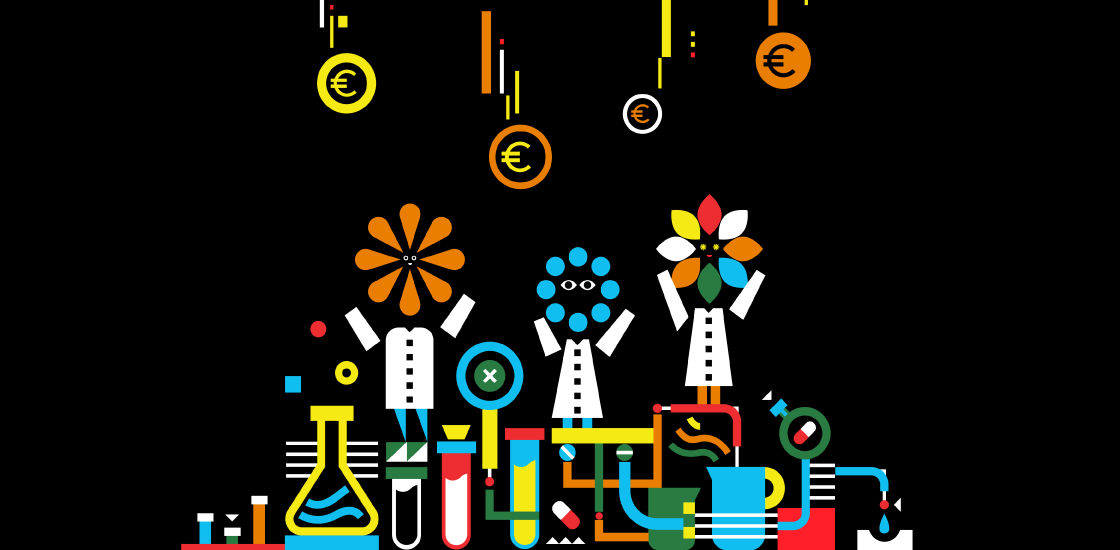Record-breaking grant may fuel autism drug development
A huge new research collaboration may jump-start the race to develop therapies for autism.

A huge new international research collaboration may jump-start the race to develop therapies for autism. With more than 113 million euros (about $132 million) in funding, it is the biggest project to date in autism research.
Launched in June, the Autism Innovative Medicine Studies-2-Trials, or AIMS-2-Trials, brings together 48 partners from 14 nations, including academic institutions, pharmaceutical giants and charities. One of its aims is to establish a clinical-trial network of more than 15 centers across the European Union.
Because autism may take vastly different forms, the ultimate goal is to tailor therapies to an individual’s biological profile, says Declan Murphy, professor of psychiatry and brain maturation at King’s College London and the academic lead on the project.
The researchers also plan to look for risk factors that render autistic people particularly susceptible to other conditions, such as anxiety and epilepsy. These co-occurring conditions add a “significant burden” on top of autism, Murphy says. The plan is to explore the connection between autism and these conditions, quantify their impact and investigate ways to treat and prevent them.
“That’s going to be extremely valuable because we already have treatments for those disorders,” says Peter Mundy, professor of psychiatry and behavioral sciences at the University of California, Davis, who is not involved with the project. “That’s the area that I think we’re most likely to be able to address in a major way in the next few years.”
Many scientists see value in a large, concerted effort to tackle autism. Autism trials are typically conducted only at a few sites, and often with small numbers of participants who do not represent the entire spectrum, says Shafali Jeste, associate professor of psychiatry and neurology at the University of California, Los Angeles, who is not part of the project.
The small sample sizes also generally do not reflect the economic and cultural diversity of people with autism. The new project should help fill these gaps, she says.
Still, some scientists say they worry that large, centralized studies could stifle the innovation that individual grants foster.
“Funding on such a scale will limit the opportunity for other voices to be heard and thus other scientific discoveries to be realized,” says Charles Nelson, professor of pediatrics and neuroscience at Harvard University.
Matthew Anderson, associate professor of pathology at Harvard, echoes that concern: “While I am very excited to see such enthusiasm to solve and treat autism, I do worry that the groupthink which can sometimes occur in these large programs might squelch independent innovative thought,” he says.
New AIMS:
The new initiative follows a project called EU-AIMS, which ended in March. Led by the pharmaceutical company Roche and researchers at King’s College London, that project focused on developing a framework for drug discovery. Its leaders sought to validate biomarkers for autism and to work with regulators on establishing the best ways to run clinical trials.
The researchers also made advances in understanding how brain development, anatomy and function relate to autism features. The new collaboration extends the clinical parts of the previous project. It aims to study people through the lifespan in a bid to understand what drives the wide variation in outcomes.
The researchers also plan to investigate treatments based on their previous findings. For instance, Murphy and his colleagues found that the ratio of two chemical messengers in the brain, glutamate and gamma-aminobutyric acid (GABA), is altered in people with autism, suggesting that shifting that balance might be beneficial1. For their first trial, the researchers plan to test arbaclofen, a drug that activates a subset of GABA receptors, which may restore the balance between these chemical messengers.
The trials may also explore other types of treatments, such as behavioral therapies that improve social skills, Murphy says.
The initiative is funded by several partners, including the Innovative Medicines Initiative, a European public-private effort that provides about half the funding; charities such as Autism Speaks, the U.K.-based Autistica and the New York-based Simons Foundation (Spectrum’s parent organization). About 2.6 million euros come from the European Federation of Pharmaceutical Industries and Associations, similar to PhRMA in the United States.
The effort brings together experts in neuroscience, genetics, metabolomics, proteomics, big data, fetal development and clinical trials. The diversity of expertise is necessary to tackle the heterogeneity of autism, says Thomas Bourgeron, a geneticist at Institut Pasteur in Paris and one of the collaborators.
Jeste, who is part of a similar U.S. effort called the Autism Biomarkers Consortium for Clinical Trials, says it is also notable that the project includes many stakeholders, including advocacy groups. “They’ll be representing many different facets of the field at once,” she says. “That’s pretty exciting.”
References:
- Horder J. et al. Transl. Psychiatry 8, 106 (2018) PubMed
Recommended reading

Expediting clinical trials for profound autism: Q&A with Matthew State

Too much or too little brain synchrony may underlie autism subtypes
Explore more from The Transmitter

Mitochondrial ‘landscape’ shifts across human brain

